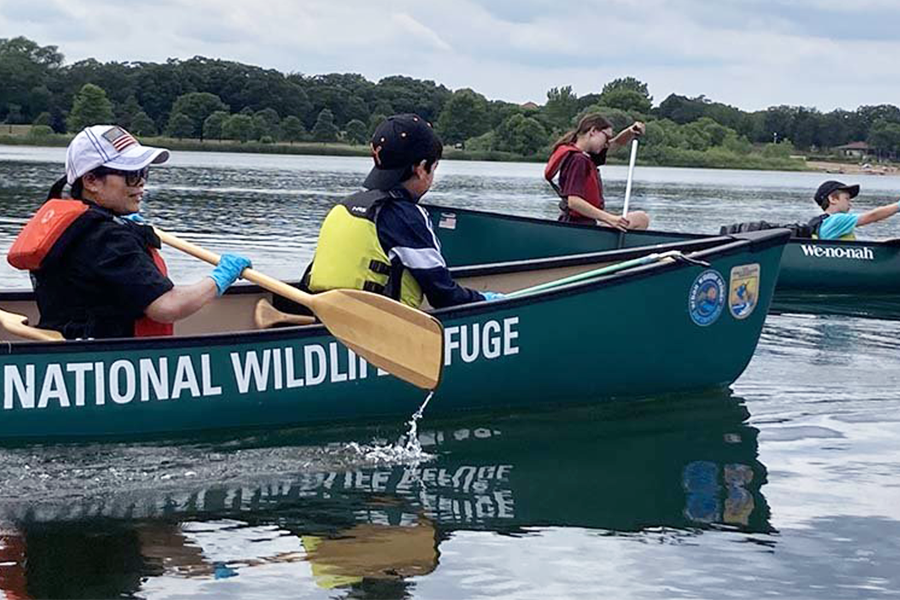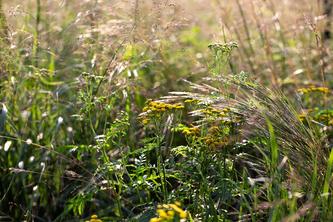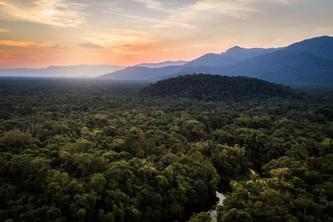
From introducing participants to the trickling Mississippi River headwaters to helping them navigate with paddles during their first time in a canoe, Lucas Rapisarda understands the value of being connected to the natural world. As program director for the Nature for New Minnesotans (NFNM) organization, he encourages his students to build their own relationship with the environment.
NFNM educates adult English Language (EL) learners about nature in Minnesota for free, made possible by the Minnesota Environment and Natural Resources Trust Fund. Rapisarda, a PhD student in the Department of Fisheries, Wildlife and Conservation Biology, took over the initiative for Britt Forsberg, an Extension educator at the University.
Because Rapisarda spent seven years as a science educator—and an advocate for educational, racial, and social justice—prior to his arrival at the U of M, this was the perfect opportunity for him to combine his passions and expand his experience.
“I’m impressed by Lucas’s thoughtfulness and commitment to the project,” Forsberg says. “He’s brought in creative ideas and has really expanded the project beyond our initial idea. I couldn’t ask for anyone better to implement my ‘What if?’ pondering in real life.”
Rapisarda teaches students from Vietnam, Egypt, Guatemala, Ethiopia, and more—adults of varying ages and education levels. He feels encouraged by the diversity that NFNM has achieved in its participants, while also recognizing the program’s challenges.
“My goal is not to get more people fishing, but to show students that they can engage in nature however they choose, and give them the confidence to do so." —Lucas Rapisarda
“This diversity of experiences, ages, and backgrounds has made creating a uniform curriculum that addresses the needs of all learners difficult,” he says.
To support students, Rapisarda works with others in NFNM to design lessons that incorporate natural history with a contextual understanding of science concepts that connect students to the natural, social, and economic world. For example, in a lesson about learning to canoe, NFNM educators describe what canoes are and discuss their history among the Indigenous peoples of Minnesota.
“This opens up discussions on the history of the land of Minnesota and places the act of canoeing in context within the state,” Rapisarda says. “In addition to discussing the history of canoes, we explore water, water quality, and water monitoring—connecting one’s use of water for transportation and one’s responsibility to protect water.
“Lastly, we show students how they can rent canoes and kayaks online or over the phone, creating opportunities for them to practice conversational English and their computer skills.”
Rapisarda hopes to develop a longer list of modules—approved and tested by EL educators—covering foraging and native plants, winter activities in Minnesota, the Mississippi River watershed, volunteer environmental monitoring and community science, and more. He also plans to expand NFNM’s network of outdoor opportunities with organizations that already support specific immigrant communities, such as Hmong Outdoors.
Finally, he wishes to organize workshops for EL educators and outdoor partners to collaborate on and improve lessons for students. “My goal is not to get more people fishing, but to show students that they can engage in nature however they choose, and give them the confidence to do so,” he says.





